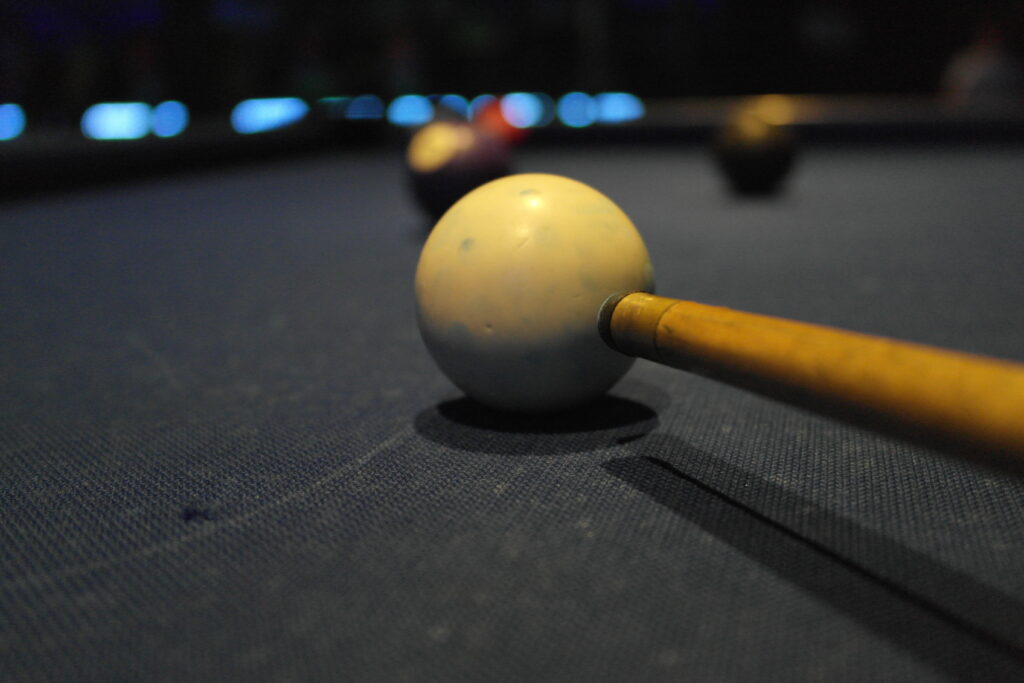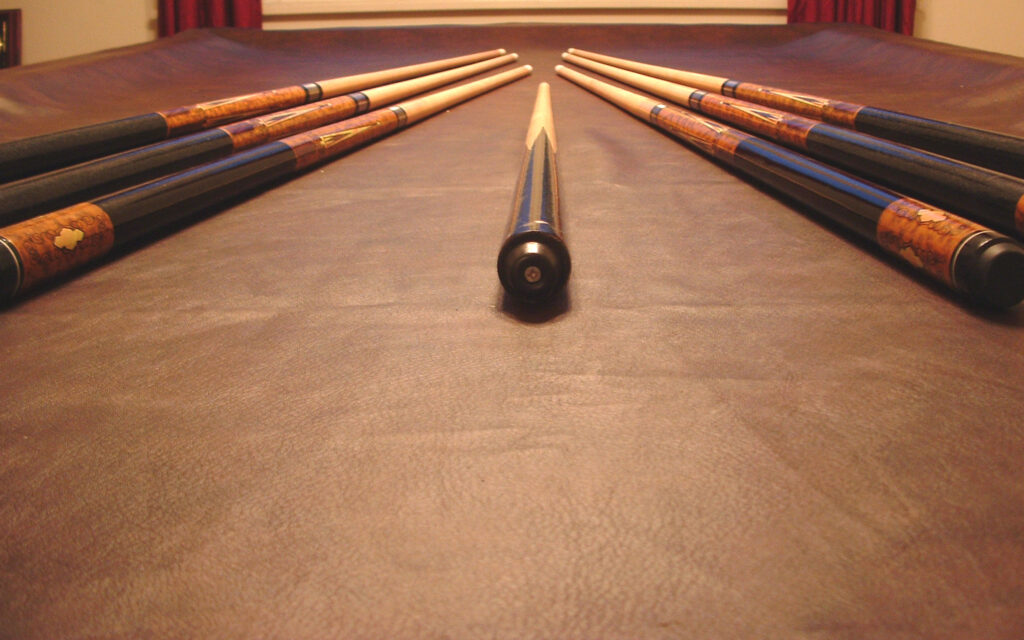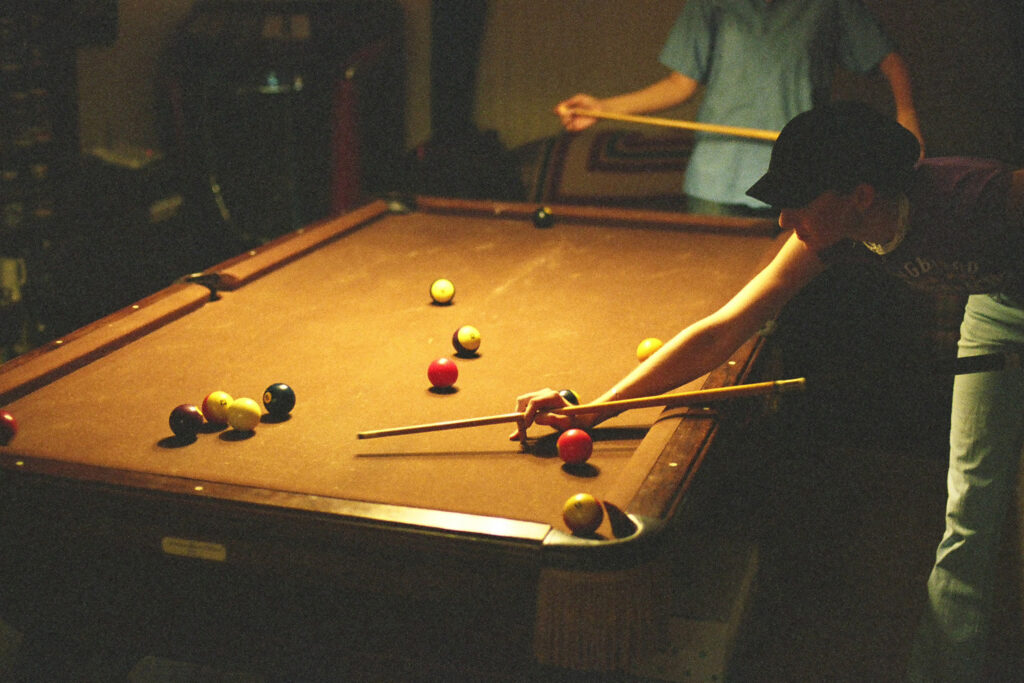As an Amazon Associate we earn from qualifying purchases.
If you feel like your shots aren’t hitting the way they should be, you might have a bent pool cue. If that’s the case, your shots won’t go the way you would want it to. Don’t worry, you probably won’t have to buy a new, straight pool cue if you learn how to straighten a pool cue.
How to Straighten a Pool Cue
You can easily fix a slight bend in your pool cue. If you have an overly bent wooden pool cue, then you should consider buying a new one. For a slight bend, there are plenty of ways you can straighten it out.
To straighten your pool cue, you need to follow a simple process to make sure that it is aligned straight as it should be. You should also use a wooden pool cue because it performs better.
Check Your Cue
Before you start, you need to check your cue for where it bends. You can easily do this by following these steps:

- Hold the pool cue at its butt end.
- Gently rest the tip of the floor. Set the stick around 60 degrees angle to the ground.
- Slowly rotate the cue slowly on its tip. Look for a spot where there’s a curve toward you. That’s where your pool cue is bent.
- You can also hold the cue beneath a good light source and spot a bend using its shadow.
Ways to Straighten Your Pool Cue
There are different methods you can use to straighten back your pool cue. Some of them don’t even require many tools. Some methods only require you use a bit of strength.
Hanging Your Cue
You can hang your pool cue in the air in an upright position with a string tied to it attached to the ceiling to straighten it. Note this actually works better for wooden cues.
After tying it hanging on the ceiling, leave it motionless for a week or more and let gravity do its work for you. The gravity will pull the cue back closer to its original shape.
While the weight of the pool cue is usually enough to straighten its bent, you can hang a bit of weight on the pool just to make sure. Just don’t add too much or you would just end up bending your pool cue more.
Bend it Back
You can also use your own strength to bend your pool cue back straight. However, remember to be careful in exerting your own strength or you will end up with a broken pool cue.
- Place the pool cue at a 60° angle to the floor. Place the flat of your hand, with your palm down on to the bend of your pool cue.
- Press down on the pool cue with a bit of force and hold it still with your hand.
- The cue will bend back to its shape. Rotate the cue again and repeat.
- Check and adjust your pool cue until you have completely straightened your pool cue.
It takes a bit of time to get used to it. Once you get the hang of it, you can easily fix your pool cues with minor bends with ease.
Use a Jacoby Shaft Adjusting Tool
The Jacoby shaft adjusting tool helps you apply the force of the cue properly. First, you have to identify which part of the pool cue is bent. Once you identify where the bent is, it’s time to use the Jacoby shaft adjusting tool.
- Place the tip end of the shaft on a table while the other end is held in your hand.
- Slide the Jacoby shaft adjusting tool back and forth gently on the area where there is a bent.
- Repeat the process until the pool cue is straight.
Do note that you have to be extremely gentle and careful when using the Jacoby shaft adjusting tool. Applying too much force may scrap off the veneer or chip the wood.
Use Temperature to Straighten the Bent Area
Sometimes the bent part is too hard to straighten back up. In that case, you can heat up your pool cue to straighten it.

Raising the temperature will make your pool cue swell and get soft. This will make it easier for you to apply some force to straighten the bent pool cue. You can use a warm wet towel to heat up your pool cue.
Make sure you properly dry off your pool cue. Moisture can damage your pool cue especially if it’s wooden.
Test Your Pool Cue
Once you have straightened the pool cue, you should check it again. This is one of the most effective methods for checking warped pool cues and mainly why this method is so popular.
- Raise your pool cue and keep it steady at your eye level.
- Hold the butt end of the pool cue firmly and steadily.
- Gaze down at the shaft’s tip like you would aim with a rifle.
- Rotate the pool cue a bit and rotate it at a 360° angle very slowly while looking down from the butt end.
- Spot for any twisting or warping and check if the tip end is fully visible throughout every angle.
If you spot a bent area repeat straightening your pool cue until you feel satisfied. Remember even the slightest alteration can affect the random development of the game.
Rolling Your Pool Cue
Many pool players like rolling their pool cue on the table to check if it’s straight or not. However, rolling your pool cue on the table does not effectively say that it’s straight or not. The pool table itself may not be flat therefore affecting your measurements.
Your pool cue can also quiver or shake a little if there’s a bit of imbalance in the table cloth or felt. Your pool cue could also wobble no matter what felt it’s placed on.
It’s better you use the “sight your pool cue” method described above for checking the straightness of your pool. It only relies on the accuracy of your eyes for measuring. With rolling a pool cue, a lot of factors can end up contributing to the measurement.
Things to Consider Before Using a Pool Cue
Sometimes other factors also affect the straightness of your pool cue. Things like the shaft’s weight, the pool cue’s length, and the type of pool cue and cue wrap can affect the performance of the pool cue.
Shaft’s Weight
A pool shaft’s weight can vary from 17 ounces to 21 ounces. Choose a weight that you feel you are comfortable with. Most pool players go for between 19 ounces to 21 ounces pool cue.
Most pool players prefer using a heavier pool cue because it gives them better control. Too light pool cue affects your accuracy especially if you are applying more power to your shots.
Length of the Pool Cue
While a straight pool cue matters, you also have to use a pool cue that has a length that you can effectively use. Most pool players go for a pool cue that has the same length as their arm. This length offers you the best comfort for handling a pool cue.
Other than that, a typical two-piece pool cue that measures 58 inches can be suitable for pool players with a height between 5’8 feet and 6’5 feet. If you are below 5’8 feet, go for a 48 or 52-inch pool cue. If you are above 6’5 feet, go for 61 inches.

Type of Cue Wrap
Pool cue wraps usually consist of linen, rubber, or leather. Each of them offers a different value to a pool player.
Leather and linen wraps are great for pool players who perspire easily and heavily. They don’t become slippery even when covered in sweat. While rubber wraps provide a better grip, they will eventually wear out fast and become slippery.
Stay away from pool cues without a wrap. They won’t provide you with great grip and they are usually slippery.
Tip of the Pool Cue
Pool cues come with hard, soft, or medium tips. It’s all about preference and no one is better than the other. Soft tips help you apply more English while hard tips provide better power in your shots.
For pool beginners, it’s better you go with the medium one for a balance of everything. There’s a reason why some professional pool players bring 2 or more pool cues in tournaments.
The tip should also have a dome shape and no splits. It also shouldn’t be too tightly compacted so it can hold chalk better.
What to Do to Keep Your Pool Cue Straight
In order to keep your pool cue straight, there are things that you should regularly practice and things that you should always avoid.
What to Do
- Store your pool cue in a hard polyform cue case or cushioned case. Securing your pool cue in a padded case keeps it safe from damage and getting bent.
- Store your pool cue in a cool and dry place. Water vapor will damage your wooden pool cue if not watched over. If you have a temperature-controlled room, better store it there.
- Handle your pool cue with care. Pool cues are rather expensive so if you break one, you will also break your wallet replacing it.
What Not to Do
- Don’t use steel wool to clean your pool cue. Steel wool exposes the pores in the wood to dirt and humidity. Use a clean, dry piece of cloth to clean your pool cue. Also, avoid sanding your pool cue.
- Don’t rest your pool cue against the wall.
- Never place your pool cue near a source of heat like a fireplace or radiator.
- Don’t leave your pool cue in places like your vehicle trunk for too long. Places like this are often cold and dank or hot and humid which will damage your pool cue.
Conclusion
You can straighten your pool cue in a lot of different ways. Just make sure that you do it properly. You should also handle your pool cue with care and never let it get warped in the first place.